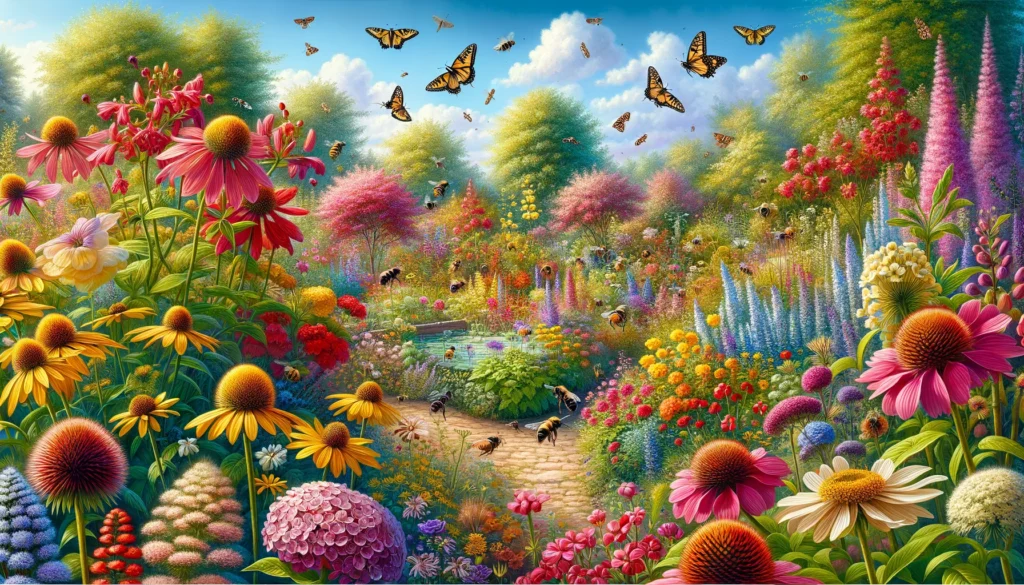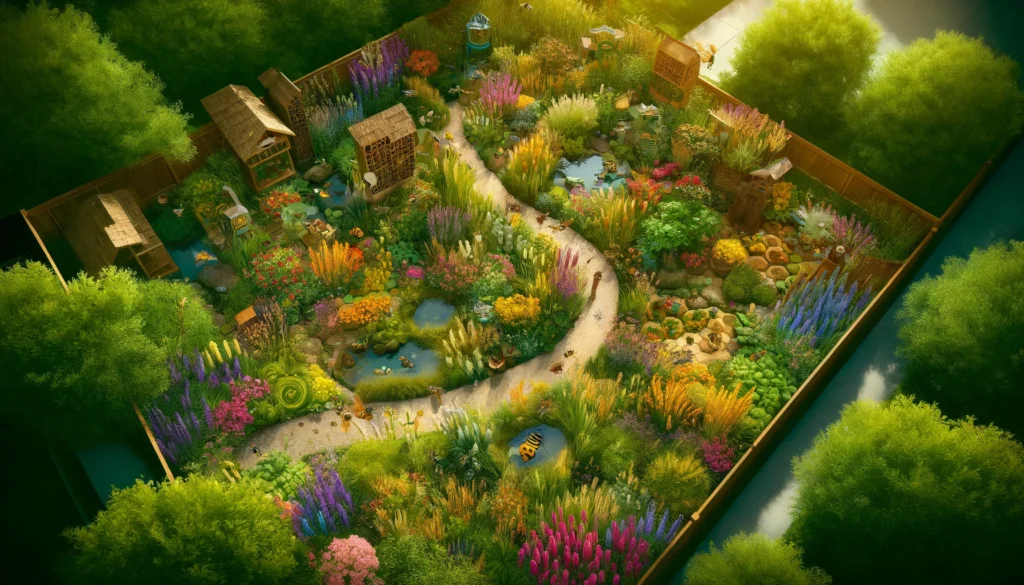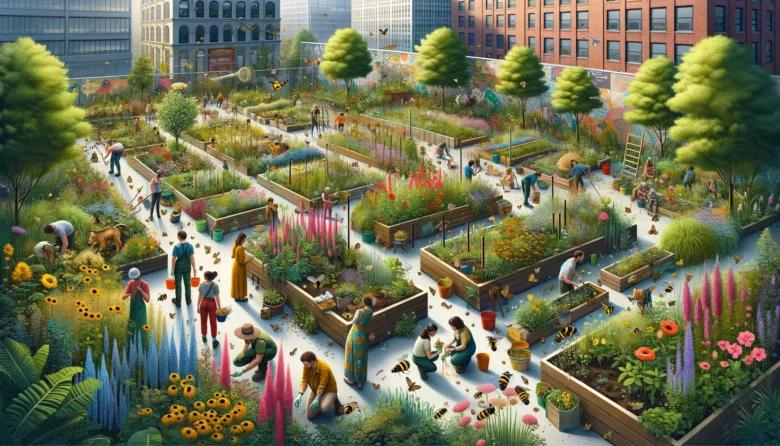Hey there, garden enthusiasts! Have you ever wondered why some gardens seem to buzz with life while others are oddly quiet? The secret often lies in the presence of native pollinators—those hardworking bees, butterflies, birds, and even bats that play a crucial role in our ecosystems. Today, we’re diving into “Supporting Native Pollinators: A Guide to Creating a Thriving Garden.” Whether you’re a seasoned gardener or just starting out, this guide will help you create a haven for these essential creatures right in your backyard.
Who Are the Native Pollinators?
So, who exactly are these native pollinators we’re talking about? Native pollinators are species that naturally occur in a specific area. They encompass various species such as bees, butterflies, birds, bats, and even certain beetles and flies. Unlike non-native species, these pollinators have evolved alongside local plants and are perfectly adapted to their environment.
For instance, in North America, you might spot the industrious bumblebee (Bombus spp.), the delicate monarch butterfly (Danaus plexippus), or the colorful hummingbird. Each of these creatures plays a unique role in pollinating native plants, which helps maintain the balance and health of local ecosystems.

The Critical Role of Native Pollinators in Ecosystems
Now, let’s talk about why these native pollinators are so important. First off, they’re essential for plant reproduction. Many of the fruits, vegetables, and nuts we enjoy rely on pollinators to produce their yields. Without these tiny helpers, our diets—and ecosystems—would look drastically different.
Native pollinators also help maintain biodiversity. They pollinate wild plants, which in turn provide food and habitat for other wildlife. This interconnected web of life supports everything from the tiniest insects to large mammals. Plus, by supporting native plants, pollinators help stabilize soil and improve water quality, benefiting the entire ecosystem.
Threats to Native Pollinators
Unfortunately, native pollinators face numerous threats that are putting their populations at risk. Habitat loss and fragmentation due to urban development, agriculture, and deforestation are major issues. When natural habitats are destroyed, pollinators lose the places they need to live, feed, and reproduce.
Pesticides and other chemical pollutants also pose significant dangers. These chemicals can be toxic to pollinators, reducing their numbers and disrupting their behaviors. Climate change further complicates things by altering flowering times and migration patterns, making it harder for pollinators to find the food they need.
Additionally, invasive species and diseases can decimate native pollinator populations. Non-native plants may not provide the right kind of nectar or pollen, and invasive animals can outcompete or prey on native pollinators.
How to Create a Pollinator-Friendly Garden
So, what can you do to help? Creating a pollinator-friendly garden is a fantastic start. Here are a few easy steps to help you get started:
- Choose Native Plants: Planting a variety of native flowers, shrubs, and trees is key. These plants have evolved alongside local pollinators and provide the best sources of nectar and pollen.
- Plan for Blooming Seasons: Ensure Year-Round Blooming: Choose plants that bloom at different times throughout the year. This ensures that pollinators have a steady supply of food throughout the seasons.
- Avoid Pesticides: Instead of chemical pesticides, use natural pest control methods. Introduce beneficial insects like ladybugs and spiders that prey on pests, or use organic solutions like neem oil.
- Provide Water Sources: Pollinators need water, too. A shallow dish with water and stones can give them a place to drink and cool off.
- Create Shelter: Leave some areas of your garden a bit wild. Piles of leaves, logs, and undisturbed ground can provide nesting sites for bees and other pollinators.
Community and Policy Actions to Support Native Pollinators
Beyond your backyard, there are ways to support pollinators on a larger scale. Get involved with local initiatives that focus on habitat restoration. Community gardens, urban green spaces, and conservation projects can all benefit from your help.
Advocating for pollinator-friendly practices in agriculture and urban planning is also crucial. Support policies that limit pesticide use, protect natural habitats and encourage the planting of native species. Your voice can make a difference!
Success Stories and Case Studies
Let’s take a look at some success stories to inspire you:
- Toronto’s Pollinator Pathway Project
In Toronto, the “Pollinator Pathway” project has turned urban spaces into thriving habitats for bees and butterflies. By planting native species and creating continuous green corridors, the project has significantly boosted pollinator populations. This initiative shows how urban areas can be transformed into pollinator havens, benefiting both wildlife and the local community.
- The Great Sunflower Project
Another inspiring example is the “Great Sunflower Project.” This citizen science initiative encourages people to plant sunflowers and monitor pollinator visits. Participants gather valuable data on pollinator activity, helping researchers understand and protect these vital species. The project has raised awareness about the importance of pollinators and empowered individuals to contribute to scientific research from their own backyards.
- UK’s B-Lines Project
In the UK, the “B-Lines” project maps out and connects wildflower-rich habitats across the country. This network helps pollinators move freely and find food and shelter. By creating these green corridors, the B-Lines project has provided essential support for pollinator populations, showcasing the power of coordinated conservation efforts and the positive impact they can have on biodiversity.
Each of these success stories highlights the importance of creating and maintaining pollinator-friendly environments. They demonstrate that with a bit of effort and coordination, we can make a significant difference in supporting native pollinators and ensuring the health of our ecosystems.

Conclusion
Native pollinators are the unsung heroes of our ecosystems, and they need our help. By creating pollinator-friendly gardens, supporting community efforts, and advocating for better policies, we can ensure these vital creatures thrive. So, let’s get out there and make our gardens buzzing with life! Together, we can make a significant impact and help restore nature’s balance.
Author’s Note
As someone deeply passionate about the environment, writing this piece on supporting native pollinators has been incredibly inspiring. I hope it ignites your passion for this transformative movement and motivates you to find ways to contribute to restoring nature’s balance.
G.C., Ecosociosphere contributor.
Further Reading




